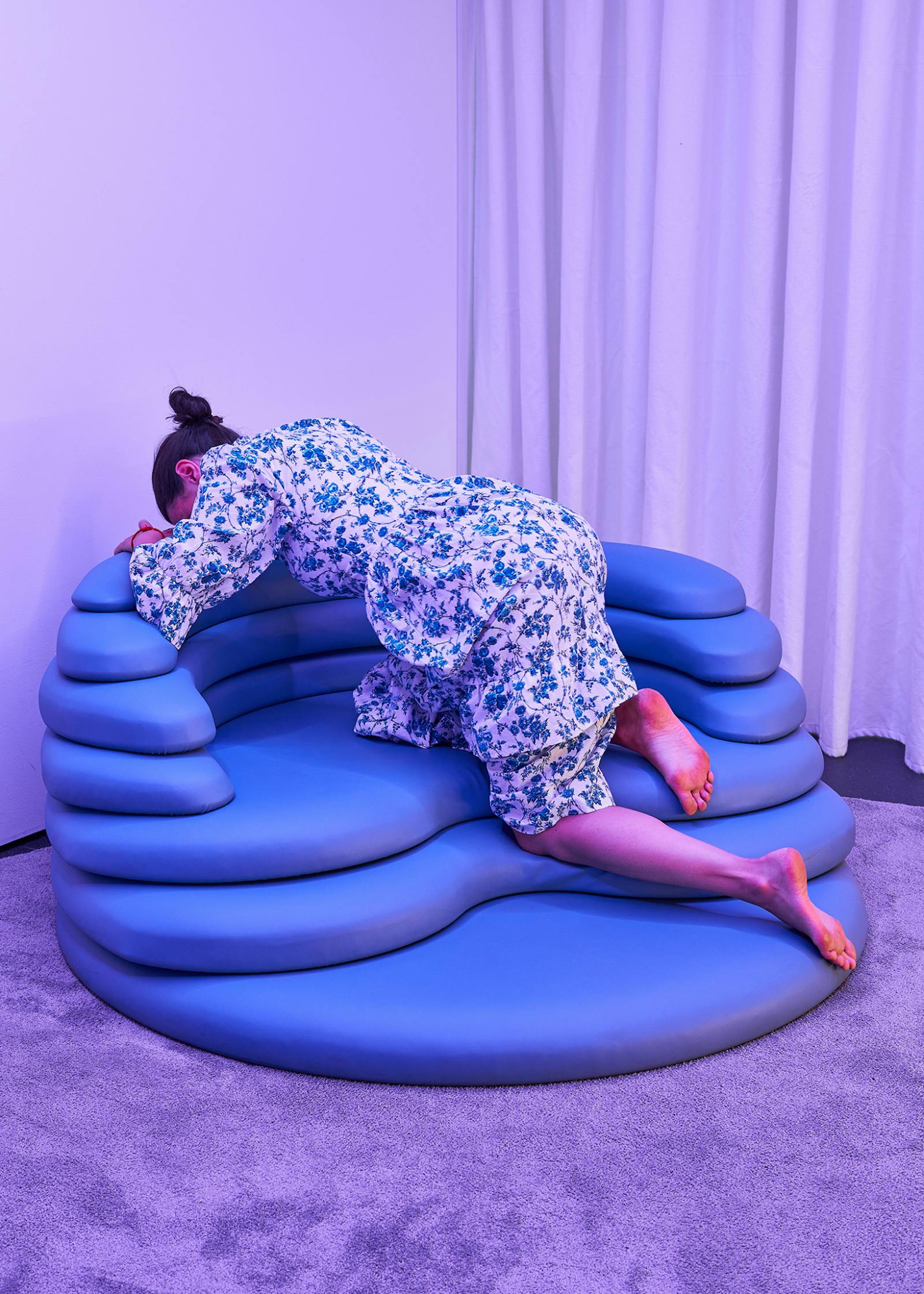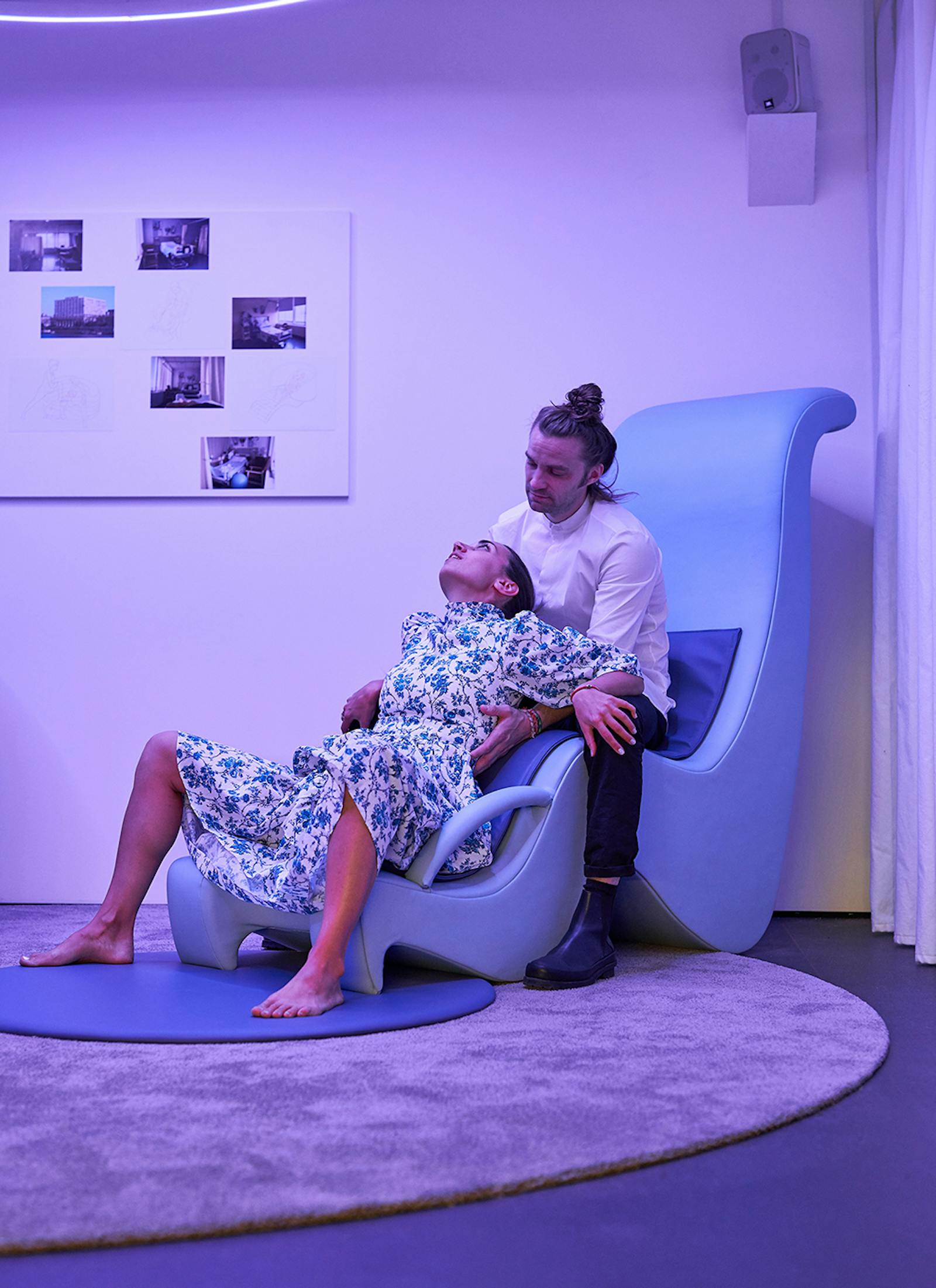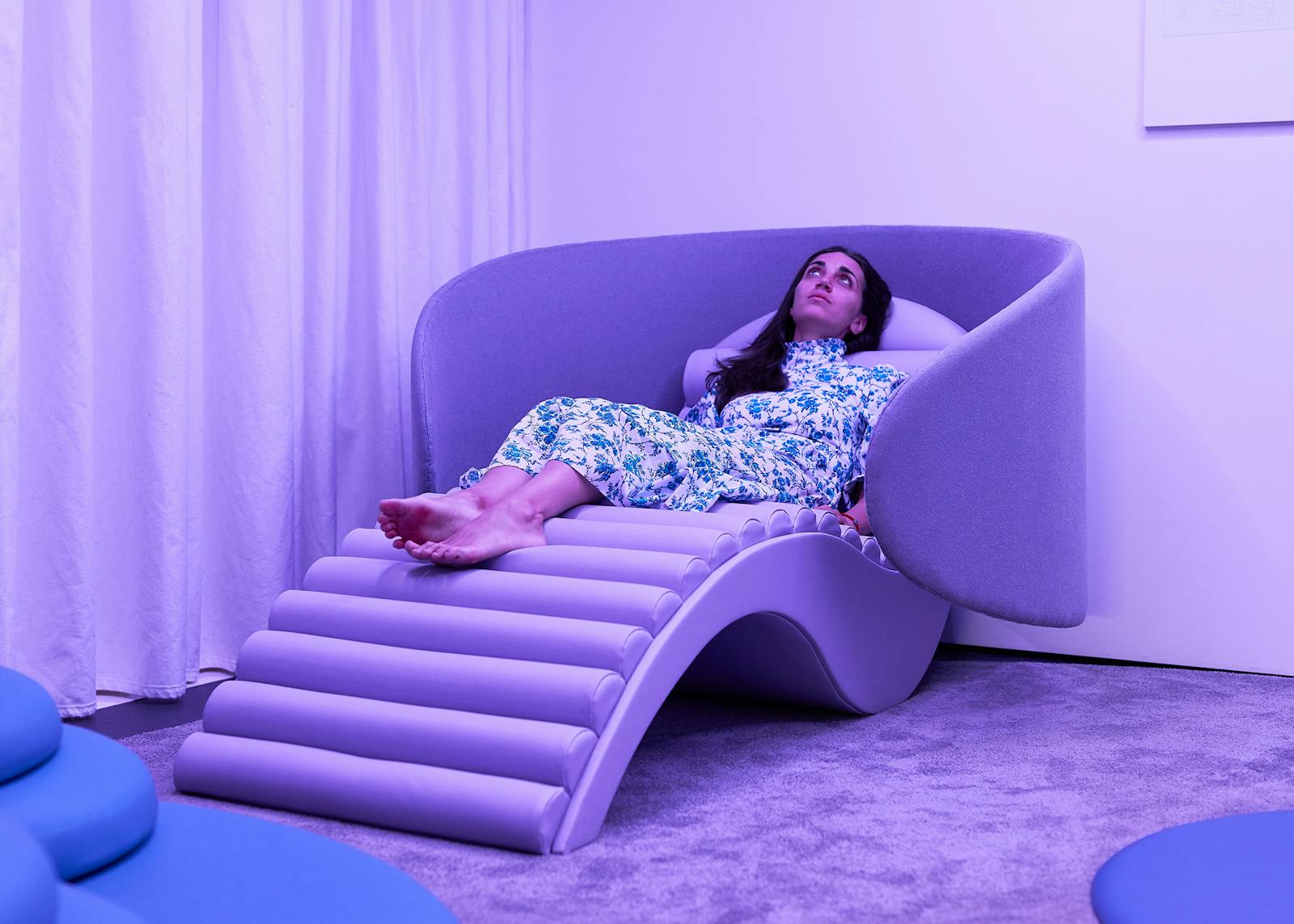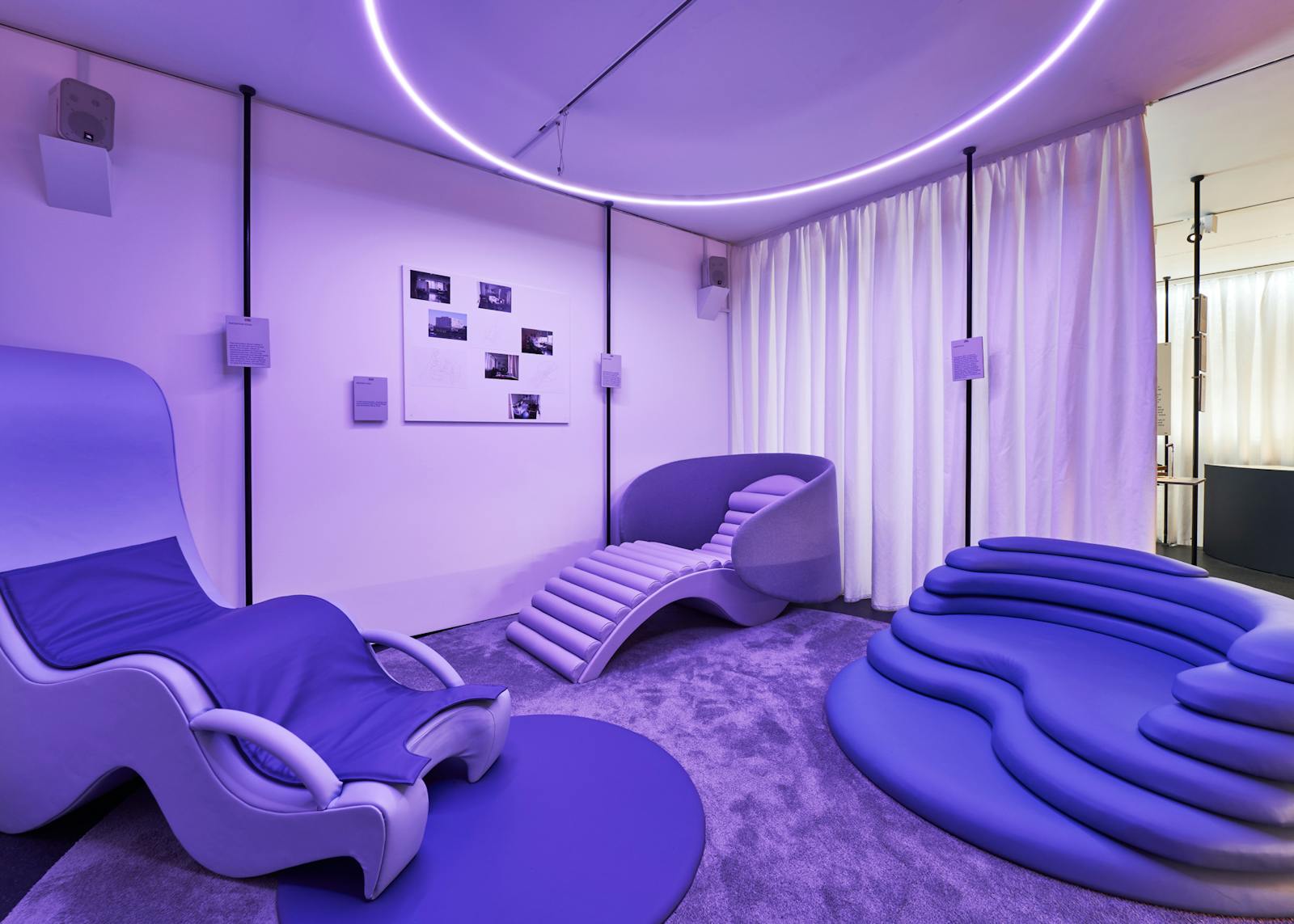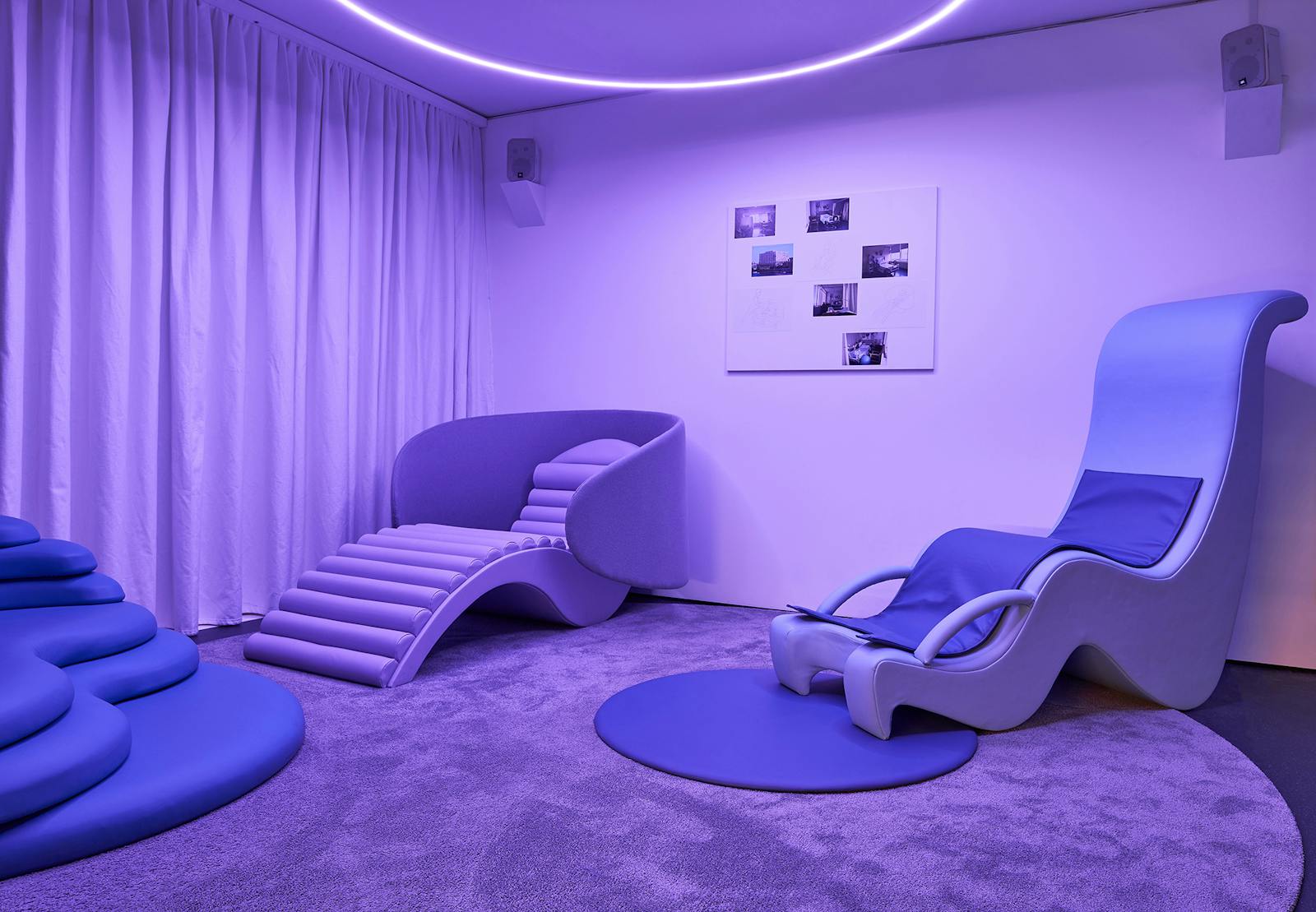Stiliyana Minkovska
Designscapes of Childbirth
Summary
Can we envision a mother centric way to give birth?
Often the means of design in general carry the male-default bias and this goes to ancient Greece, where the female body was seen as a male “turned outside in”according to Aristotle. Even today, within our advanced technological and medical realms, design repeatedly fails to implement that the female body does not only differ in its size, but in its cellular levels too. Systematically design is destined to serve the average male consumer, and this is problematic when it comes to healthcare, which often increases female mortality due to the lack of data and testing obtained to serve half of the human population.
Ever since the birth of my daughter in January 2016, I have critically engaged with the environments where women experience one of their most empowering and transformative involvements – the moment when one body splits into two and gives life and nourishment to a new person. Childbirth is frequently seen as a socially marked life crisis event that is consensually shaped and patterned.
Childbirth with its complex melange of pre-, intra-, and postpartum events that result in a new human being, falls within the medical domain. It is part of the interchangeable terms of ‘cosmopolitan’, ‘western’, ‘medical’ and ‘scientific’ medicine.
Historically, western and patriarchal societies perceived pregnancy as an illness and childbirth as a medical event, being treated as a clinical operation. The labour ward became the set for a cinematic operational drama, where the birthing mother was the experiment of a heroic male obstetrician. Pregnancy is not a disorder and delivery is not a surgical procedure, requiring medical prudence hence more holistic and female-centred design decisions are required to serve the needs of pregnant people.
On the other hand, childbirth is an event of great interactional complexity, where people should be supported by design environments and products, which accommodate their bodily agency with the full spectrum of instincts and animalistic alterations. I believe that we need a revolution within our maternal healthcare environment and its practices, and we need it yesterday. I think that we need to create products and spaces which take the health and comfort of the birthing person as the primary element and design around these needs and evolution of processes.
My thesis project as part of my MA Architecture degree at the RCA looked into the deinstitutionalisation of childbirth by proposing a concept, where women give birth in a non-medical environment and where their procreative economy and decision over their bodily agency takes priority. I proposed to take the processes of labour, birth-giving and recovery outside the hospital setting, but introduce it as an extension to the NHS, inspired by the ethos behind the Maggie’s centres.
I completed the Designers in Residence programme with the Design Museum in London, where I developed a more intimate relationship with the project by creating a triptych of furniture elements, which aid pregnant women through gestation, childbirth, recovery and termination of pregnancy. I wanted to create an inclusive environment, where women feel celebrated, regardless their reproductive choices.
At present design focuses on the convenience of the healthcare professionals assisting childbirth, hence the most common way of giving birth is the lithotomy (lying down) position, established by two male practitioners. Julien Clement from France and John Leake from England were the very founders of the horizontal birthing posture as oppose to the obstetrical chair with upright position, which the midwives still use outside the western society and which is also being revived today within the healthcare practice.
Even in the current climate of pandemic, the healthcare focus is to prevent the disease’s transmission and justly so, but this practice often overlooks the birth-giver’s entry to matrescence (the transition to motherhood). The process of childbirth has always given higher importance to the newborn, often forgetting that the mother is the nurturing vessel that the newly emergent life requires the most. The maternal wellbeing is of great significance to the healthy physiological progress of the baby.
I have joined the Healthcare & Design MRes programme at the RCA as I believe that it would allow me to expand my expertise within the field and explore a niche which deserves strong design attention and consideration. I plan to develop a project, which has a strong theoretical backing and will also publish a book as part of the course, which can combine the previous bodies of research developed both at the RCA and the Design Museum.
I will to use my time in the programme to study ways of making childbirth a more mother-centred experience by taking the birthing person as a focal point. I will collect data and spend time on site examining user experiences and interactions within the existing hospital backdrop. I will study the maternal behaviour based on the antenatal and labour ward design environments, their lighting and material palettes with their existing spatial and product design conditions. I will undertake series of samplings and propose new ways of making this distressing process more endowing through a series of proposed offerings and design interactions. I will use this programme as a tool of introducing new meanings to the experience of childbirth.
I believe we need to re-design the system which avoids the unconscious balance of maternal welfare against the one of the children. We need to create a setting where the mothers feel harmless, secure, serene and sustained through a series of design elements of offerings and spatial interventions. Women should not compromise their health and wellbeing over the one of their children. Women should have choice and design is a great way of advocating so.
